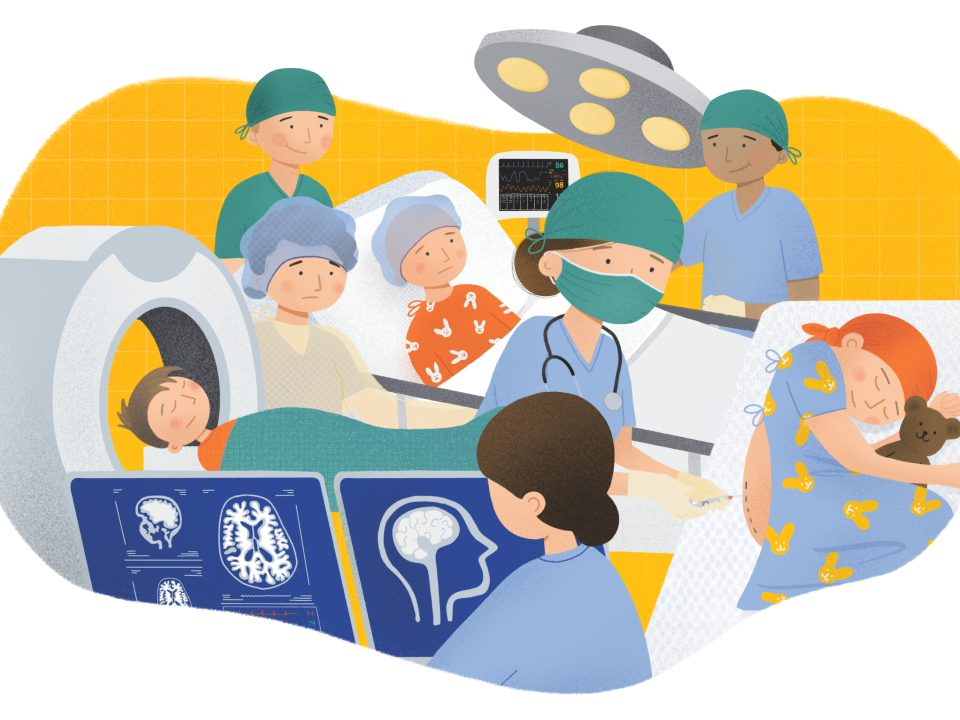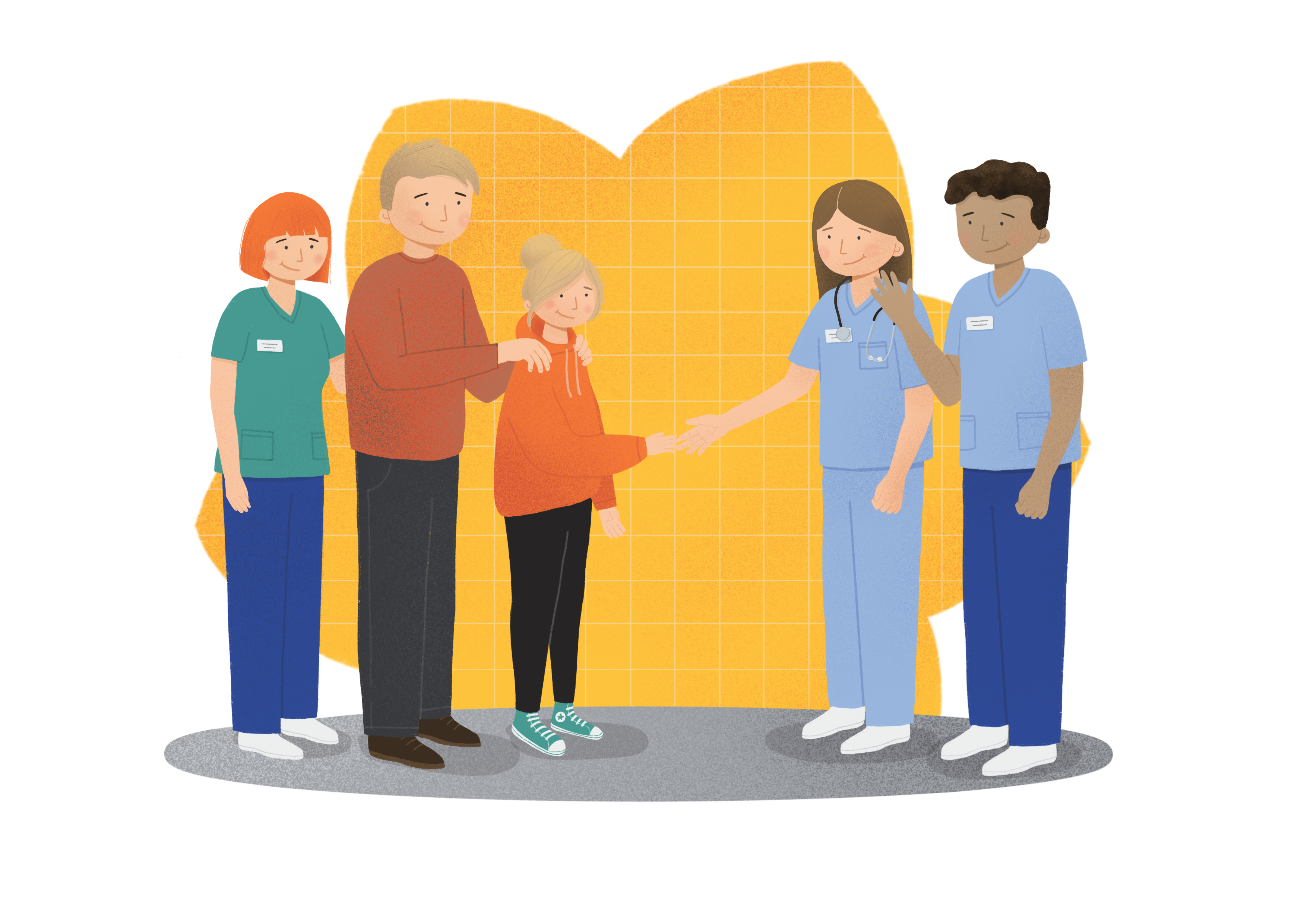Children's cancer tests

What are the tests for?
Tests are used:
- To diagnose cancer. If your GP is concerned about your child's symptoms, they may refer your child to hospital for some of the tests described below. For example, scans, blood tests and possibly a biopsy.
- To find out more about your child’s cancer – for example, how big it is, if it has spread or if it’s likely to grow quickly. This is called staging cancer.
- To look at genetic information to see how a cancer might respond to particular treatments. For example, targeted therapies. This is called cytogenetic testing.
- To check your child’s general health, for example, before surgery.
- To see how well your child is responding to treatment.
Asking questions
Ask your medical team about the test, what it’s for and how it will be done. For example, how long will it last, will there be any discomfort and will your child be able to go home afterwards? Knowing what to expect can help you to prepare your child.
Keeping children amused
If you will have to wait during the test, bringing books, toys, games, a tablet or music can help to pass the time.
Talking to children about tests
It’s a good idea to try and prepare your child for what will happen, based on their age and understanding. If it might hurt, it’s best to be open so they know they can trust you. For example, ‘This will hurt, but only for a minute. Will I hold your hand until you feel better?’
If you are unsure what is involved in some tests, ask the nurses or play specialist to help you prepare your child.
Your child might like to take part in the Beads of Courage programme. For every kind of test or treatment they have, they receive a coloured bead. They can collect these beads to keep track of their cancer journey and show just how brave they are. This programme is run by the play specialists in St John’s paediatric cancer day ward at CHI Crumlin.
Waiting for results
It’s natural to want to hear the results as soon as possible. It can take a week or two for some test results to come back. You can ask when the test is being done when your doctors expect the results back. You can also ask if you will be given the result over the phone or in person, and who they will contact.
You may feel very anxious while you’re waiting for the results. Talk to your nurses or call our Support Line and ask to talk to our children’s cancer nurse if you have any questions or you’re feeling anxious.
Scans and X-rays
X-rays and scans give a picture of the inside of your child’s body. They are used mainly for diagnosing cancer. Usually they are quick and painless.
- Bone scans
A test that can show if cancer is present in bones using a radioactive dye. - CT (CAT) scan
This special X-ray gives a detailed picture of the tissues inside your body. During the scan, your child will lie on a table which passes through a doughnut-shaped machine. - MIBG scan
It is usually done in children who have a diagnosis of neuroblastoma. It involves a radioactive substance being injected into the bloodstream and the scan being taken the next day. This will show up any areas of tumour in the body. - MRI (magnetic resonance imaging)
This uses radio waves and a powerful magnet linked to a computer to take detailed pictures of areas inside the body. These pictures can show the difference between normal and diseased tissue. - PET scan
This scan is normally done in children who have Hodgkin lymphoma. A very small amount of a radioactive substance is injected into the bloodstream, which can show up cancer cells on a scan. - Ultrasound scans
This scan uses sound waves to build up a picture of the tissues inside your body. It is like the scan used for pregnant women. A gel will be spread over the area to be examined. A small device like a microphone is moved back and forth over the area. The scanning device makes sound waves that are changed into a picture on a computer. This test is not painful but your child will need to lie still on a couch. Sometimes your child may need to fast for an ultrasound or to drink beforehand so that their bladder is full for the test. - X-rays
X-rays allow your doctor to look inside the body and check for any abnormal changes. They can check your child’s health or help with the diagnosis. X‐rays of the affected area may also be taken at various stages throughout your child’s treatment. X‐rays are not painful but your child must keep very still.
Biopsies
A biopsy is a small sample of cells removed from the body. The sample is examined under a microscope by a doctor called a pathologist to see if it contains cancer cells or to give your doctor information about the type of cancer and how it might grow (the cancer grade). Biopsies are usually done under anaesthetic. Read more about biopsies.
Lumbar puncture
This test can be done to diagnose, prevent or treat disease. The fluid that surrounds the brain and spinal cord is called cerebrospinal fluid. During the test, some of this fluid is removed by putting a needle into the lower back. The fluid is then examined in a laboratory. It is done under general anaesthetic. Read more about lumbar punctures.
Blood tests
Blood tests can be used to check your child’s health, to diagnose blood cancers, and to check how well your child is responding to treatment. Read more about blood tests.
Tests to examine cells and genes
Blood samples can be used to examine the cancer cells and their genetic material in detail to give more information about the type of cancer, how it might behave and how it might respond to different treatments. For example, immunophenotyping, FISH analysis and other cytogenetic tests. Find out more about tests to examine cells and genes.
Urine and kidney tests
A sample of urine may be taken and checked to see how your child is responding to treatment, to look for infection or to see if there are any problems due to treatment.
- GFR (glomerular filtration rate)
This tests check your child’s kidney function. A small amount of radioisotope is injected into your child’s blood. Blood tests will be taken 2 hours after the first injection and then 2 hours later again. The kidneys are checked because it is known that some chemotherapy and certain antibiotics can damage them. If your child has a single lumen Hickman, he/she will need a small tube (cannula) put into their hand to give the dye. - Urinalysis
A test to check the number of white blood cells and red blood cells in the urine (pee). It also tests for protein, bacteria and sugar. Your child’s urine is collected in a sterile bag or container. - Urine VMA (vanillylmandelic acid)
A test referred to as either ‘urine VMA’ or ‘urine catecholamine’. VMA is a chemical found in the urine in raised amounts when a child has neuroblastoma.
For more information
Phone
1800 200 700








